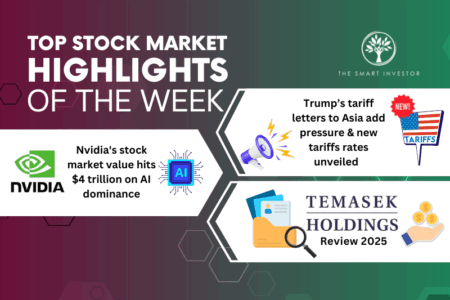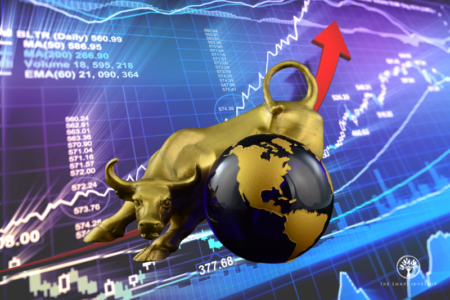Legendary investor Warren Buffett believes that risk comes from not knowing what you are doing.
As investors, we like to believe that we are fully aware of the actions we are taking when we buy or sell shares.
But in reality, we can never be 100% certain that our investments will make money.
The uncertainty stems from future events that may not pan out the way we expect them to, including unexpected events such as a pandemic or heavy-handed government intervention.
There is also the probability that the business may not perform as well as we expect it to despite the management’s best efforts.
All these factors can undermine even the best stock picker in the world.
It follows that when we invest, we have to accept a certain level of risk.
The concept of risk
But what is “risk” and how do we know if we are taking on too much of it?
Many people think of risk as the volatility of stock prices as they bounce around on their screen.
The financial community has even devised a mathematical formula to compute how “risky” a stock’s price is by measuring the magnitude and frequency of its fluctuations.
But risk is actually a much simpler concept that you and I can understand.
You see, the stock price is simply the price you pay for a share of the business.
But what you get in return depends on the value of the business behind the ticker.
Know that even large and established blue-chip companies routinely experience sharp bouts of volatility.
Take Singapore Exchange Limited (SGX: S68), or SGX, for instance.
The bourse operator started off the year at S$9.23 before climbing steadily to hit a five-year high of S$12.05 in early August, up 30.6% for the year.
Subsequently, the stock exchange’s share price slid as much as 24% to end the year at almost the same level it started out with.
Despite the share price volatility, SGX’s revenue has stayed constant at S$1.1 billion for its latest fiscal 2021, while net profit came in at S$445 million.
Total dividend paid for the year came up to S$0.32, a tad higher than the S$0.30 per share it paid two years ago.
Hence, even though SGX’s stock price has fallen recently, its business is doing fine.
Risk is personal
Now that we understand what risk is and isn’t, it’s time to assess the level of risk we take up when we make certain investments.
First off, risk is personal.
In other words, everyone perceives and defines risk differently.
Even two experienced investors will perceive risk through a different lens depending on their own risk appetite and investment goals.
A growth investor may feel comfortable investing in high-growth companies that are unprofitable while a dividend-focused investor may eschew such companies as being riskier, instead preferring the safety of receiving a steady stream of passive income.
Industry expertise also plays an important role in defining a person’s risk appetite.
For instance, an experienced person in the field of genomics would have a better understanding of its potential and pitfalls.
The veteran’s understanding of the subject matter will be far more intimate compared to the common investor.
Understanding your investments
Another way to measure your risk level is to ask yourself whether you have a basic understanding of what you are investing in.
If you are buying shares of Apple (NASDAQ: AAPL) or Starbucks (NASDAQ: SBUX), you need to at least know how they earn their money, how the business is performing, and their plans to grow their business.
Investing without studying the business is like playing poker without looking at your cards..
Punters who place their bets on companies they’ve either little knowledge of or find too complex to understand are taking on more risk than they are aware.
If you find a business too complicated to understand, then it’s advisable to take a step back first before committing your capital.
A blue-chip conglomerate such as Keppel Corporation Limited (SGX: BN4) is a household name but the offshore and marine business is both technical and complex, making it tough to fully appreciate.
Knowledge also needs to be constantly updated because of changes in the business environment.
What you previously understood may either be obsolete or irrelevant in light of rapid changes caused by competitive forces or new trends.
If you simply “buy and forget”, you may end up with a poor result as a lack of understanding of how the business changes and evolves introduces a huge dose of risk.
The folly of not understanding your investments cannot be overstated should something go wrong to cause your investment to nosedive.
The risk of not investing
But if investing is so risky, why should we do it?
Well, there is risk if you don’t invest too.
Last month, it was reported that Singapore’s inflation rate hit 3.8% in November, breaking October’s previous high of 3.2%, which was itself the highest in several years.
Even if we exclude big-ticket items such as housing and cars, core inflation still rose by 1.6%, higher than the 1.5% clocked up in October, and is expected to rise further.
By parking your money in a bank account where it will be “safe”, you are earning a paltry interest rate of just 0.05%.
You may believe that your money remains intact, but it is being quietly eroded by inflation.
Hence, the risk of not investing is that your money will get eaten away by inflation, slowly but surely.
Get Smart: Your goal in investing
So, how should you approach the topic of risk?
The best way, in my view, is to think of it as a continuum.
We have to accept that we cannot avoid risk when we invest.
However, we need to know how to properly manage it.
A good way to start is by building a base of strong stocks including blue-chip companies and dividend stocks with a great track record.
This layer of stocks has the least risk as the companies have survived numerous business cycles, and should form the majority of your portfolio.
Once you have established this strong base, you can allocate a small percentage of, say 5% to 10% of your money, to stocks that promise higher returns but are less certain.
By structuring your portfolio this way, you can mitigate the risk of a big blow-up that may materially impact your wealth.
You get to enjoy the best of both words — not only will your investment portfolio handily beat inflation, but you are also enjoying a great return on your capital without taking on excessive risk.
Note: An earlier version of this article appeared in The Business Times.
What do real estate, Malaysia, Asia’s retail and healthcare have in common? They are a rich source of dividends! And in 2022, these 4 sectors look to be full of companies with healthy cash flows and dividends. If you want to own some of these stocks yourself, then grab a copy of our latest special report. Click here to download it for FREE.
Disclaimer: Royston Yang owns shares of Singapore Exchange Limited, Apple and Starbucks.




